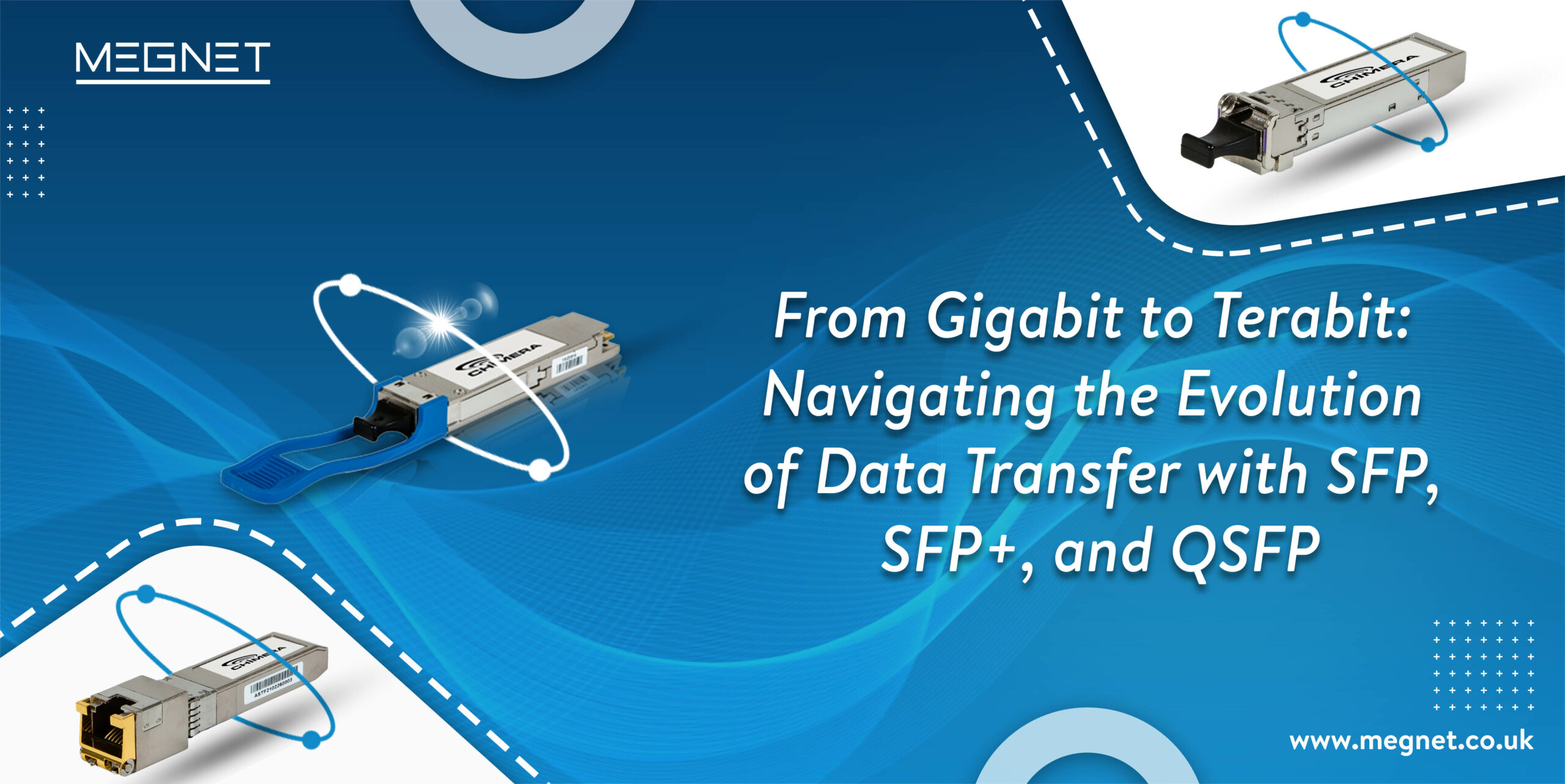
SFP, SFP+, and QSFP: the keys to high-speed data transfer
In today’s rapidly evolving digital landscape, the demand for high-speed data transfer has never been greater. From streaming high-quality videos to transferring large files, businesses and individuals alike rely on fast and reliable data transfer solutions. This blog post explores the evolution of data transfer technologies, specifically focusing on SFP (Small Form-Factor Pluggable), SFP+ (Enhanced Small Form-Factor Pluggable), and QSFP (Quad Small Form-Factor Pluggable) modules. We will dive into the technical details, examples, specifications, and current market trends surrounding these technologies.
SFP, SFP+, and QSFP are three types of transceivers that are commonly used to connect network devices to optical fiber cables. They offer a variety of features and benefits that make them well-suited for high-speed data transfer applications.
SFP: Small Form-factor Pluggable
SFP stands for Small Form-factor Pluggable. It is a compact, hot-pluggable transceiver module that is used for both telecommunication and data communications applications. SFP transceivers are available in a variety of speeds, from 1 Gbps to 10 Gbps. They are also available with a variety of optical interfaces, including single-mode fiber, multimode fiber, and copper.
SFP transceivers are a popular choice for high-speed data transfer applications because they are small, easy to install, and relatively inexpensive. They are also compatible with a wide range of network devices.
SFP+: Small Form-factor Pluggable Plus
SFP+ is an updated version of SFP that supports higher speeds up to 100 Gbps. SFP+ transceivers are also backward compatible with SFP ports, so they can be used to upgrade existing networks to 100 Gbps speeds.
SFP+ transceivers are a good choice for high-performance data center applications and for connecting servers to storage arrays. They are also used in some high-end enterprise networks.
QSFP: Quad Small Form-factor Pluggable
QSFP stands for Quad Small Form-factor Pluggable. It is a larger transceiver module that supports four 10 Gbps channels, for a total throughput of 40 Gbps. QSFP transceivers are also available in 100 Gbps and 200 Gbps versions.
QSFP transceivers are a good choice for high-density data center applications and for connecting servers to high-speed storage arrays. They are also used in some long-distance optical networks.
Evolution of Data Transfer Technologies
Gigabit Ethernet using SFP Modules
In the early days of data transfer, Gigabit Ethernet was the standard. SFP modules were widely used to achieve data transfer rates of up to 1 Gbps (Gigabit per second). These small form-factor pluggable modules provided a versatile and cost-effective solution for network connections. They became popular due to their hot-swappable feature, allowing them to be easily replaced or upgraded without disrupting network operations. SFP modules are commonly used in networking equipment such as switches, routers, and network interface cards.
Advancements with SFP+ Modules
As the demand for higher data transfer rates grew, the need for enhanced small form-factor pluggable modules became evident. This led to the development of SFP+ modules, which are designed to support data transfer rates up to 10 Gbps. SFP+ modules use the same form factor as SFP modules but with improved electrical and thermal performance. They are backward-compatible with SFP slots, allowing for easy upgrade paths. With the introduction of SFP+ modules, businesses and organizations could achieve faster data transfer speeds without the need for major infrastructure upgrades.
Introducing QSFP Modules for Higher Data Transfer Rates
With the continuous increase in demand for faster data transfer rates, the industry introduced Quad Small Form-Factor Pluggable (QSFP) modules. QSFP modules utilize a smaller form factor than their predecessors and support data transfer speeds of up to 40 Gbps. This significant leap in data transfer performance has opened up new possibilities for data-intensive applications such as high-performance computing, cloud computing, and data centres. QSFP modules are commonly used in switches, routers, and storage devices.
Technical Specifications
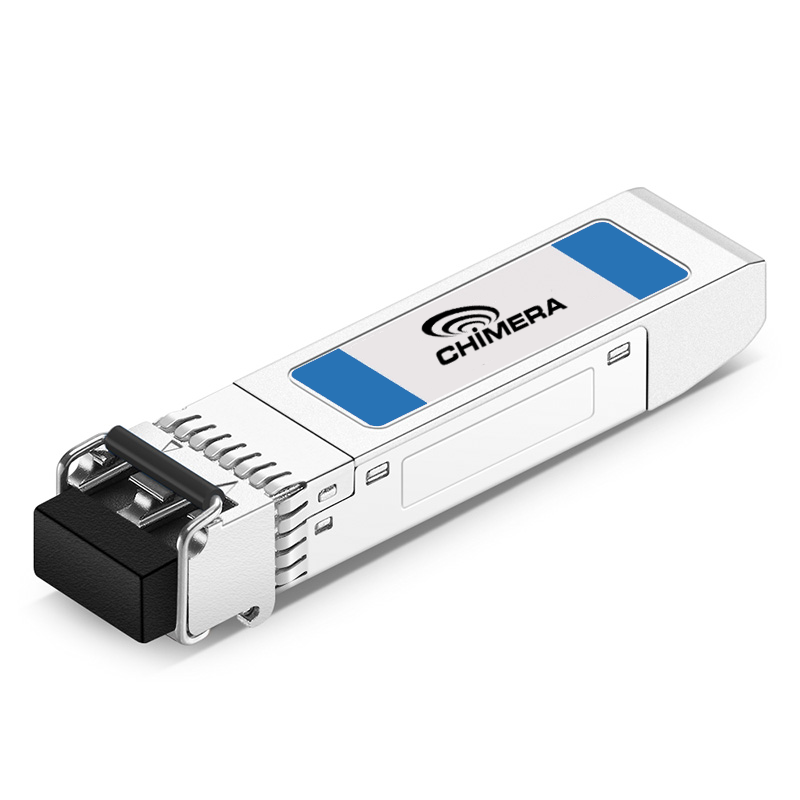
SFP and SFP+ Specifications
Here are some technical specifications for SFP and SFP+ modules:
- SFP supports data transfer rates up to 1 Gbps.
- SFP+ supports data transfer rates up to 10 Gbps.
- Both SFP and SFP+ modules support digital diagnostics monitoring (DDM) for proactive network monitoring.
- SFP and SFP+ modules use LC (Lucent Connector) connectors for fibre optic connections.
- SFP and SFP+ modules are available in various types, such as SX (short wavelength), LX (long wavelength), and DWDM (Dense Wavelength Division Multiplexing), catering to different network requirements.
QSFP Specifications
Here are some technical specifications for QSFP modules:
- QSFP supports data transfer rates up to 40 Gbps.
- QSFP modules use MPO (Multi-Fiber Push-On) connectors for high-density fibre optic connections.
- QSFP modules are available in various types, such as SR4 (Short Reach), LR4 (Long Reach), and ER4 (Extended Reach), offering different reach capabilities.
- QSFP modules can also support breakout cables, allowing for connectivity to multiple devices simultaneously.


SFP transceivers are typically about the size of a credit card and have a small form factor pluggable (SFP) connector. They are hot-pluggable, which means that they can be inserted or removed from a network device without having to power down the device. This makes them well-suited for applications where network downtime is not an option.
SFP transceivers use a variety of optical interfaces, including single-mode fiber, multimode fiber, and copper. Single-mode fiber is the most common type of fiber optic cable for high-speed data transfer. It is capable of transmitting data over long distances, with a theoretical maximum distance of over 100 kilometers. Multimode fiber is less expensive than single-mode fiber, but it is not capable of transmitting data over as long of distances. Copper is the most common type of cable for short-distance data transfer. It is less expensive than fiber optic cable, but it is not as well-suited for high-speed data transfer.
SFP transceivers are available in a variety of speeds, from 1 Gbps to 10 Gbps. 1 Gbps is the most common speed for SFP transceivers. It is sufficient for most applications, but it may not be enough for applications that require very high data transfer speeds. 10 Gbps is a faster speed that is well-suited for high-performance data center applications and for connecting servers to storage arrays.
Examples
Some examples of SFP transceivers include:
- Cisco SFP-10G-SR: This SFP transceiver supports 10 Gbps data transfer speeds over single-mode fiber. It has a maximum distance of 300 meters.
- Juniper Networks SFP-10G-LRM: This SFP transceiver supports 10 Gbps data transfer speeds over multimode fiber. It has a maximum distance of 2 kilometers.
- Intel X520-DA2: This network adapter card supports two SFP ports. It can be used with a variety of SFP transceivers, including 1 Gbps, 10 Gbps, and 40 Gbps transceivers.
Specifications
The following are some of the specifications for SFP transceivers:
- Form factor: SFP
- Connector: SFP
- Optical interface: Single-mode fiber, multimode fiber, or copper
- Data transfer speed: 1 Gbps, 10 Gbps, or 40 Gbps
- Maximum distance: Varies depending on the optical interface
- Compatibility: Varies depending on the network device
SFP+: Small Form-factor Pluggable Plus
SFP+ is an updated version of SFP that supports higher speeds up to 100 Gbps. SFP+ transceivers are also backward compatible with SFP ports, so they can be used to upgrade existing networks to 100 Gbps speeds.
Technical Details
SFP+ transceivers are similar to SFP transceivers in terms of size and form factor. However, they have a number of technical improvements that allow them to support higher data transfer speeds. For example, SFP+ transceivers use a different optical interface than SFP transceivers. This allows them to transmit data over longer distances at higher speeds.
SFP+ transceivers are available in a variety of speeds, from 10 Gbps to 100 Gbps. 100 Gbps is the most common speed for SFP+ transceivers. It is sufficient for most applications, but it may not be enough for applications that require very high data transfer speeds.
Examples
Some examples of SFP+ transceivers include:
- Cisco SFP+-100G-SR: This SFP+ transceiver supports 100 Gbps data transfer speeds over single-mode fiber. It has a maximum distance of 300 meters.
- Juniper Networks SFP+-100G-LRM: This SFP+ transceiver supports 100 Gbps data transfer speeds over multimode fiber. It has a maximum distance of 2 kilometers.
- Intel X710-DA2: This network adapter card supports two SFP+ ports. It can be used with a variety of SFP+ transceivers, including 10 Gbps, 100 Gbps, and 40 Gbps transceivers.
Specifications
The following are some of the specifications for SFP+ transceivers:
- Form factor: SFP+
- Connector: SFP+
- Optical interface: Single-mode fiber, multimode fiber, or copper
- Data transfer speed: 10 Gbps, 100 Gbps, or 40 Gbps
- Maximum distance: Varies depending on the optical interface
- Compatibility: Varies depending on the network device
QSFP: Quad Small Form-factor Pluggable
QSFP stands for Quad Small Form-factor Pluggable. It is a larger transceiver module that supports four 10 Gbps channels, for a total throughput of 40 Gbps. QSFP transceivers are also available in 100 Gbps and 200 Gbps versions.
Technical Details
QSFP transceivers are larger than SFP and SFP+ transceivers, but they offer significantly higher data transfer speeds. QSFP transceivers are typically used in high-density data center applications and for connecting servers to high-speed storage arrays.
QSFP transceivers use a different optical interface than SFP and SFP+ transceivers. This allows them to transmit data over longer distances at higher speeds.
Examples
Some examples of QSFP transceivers include:
- Cisco QSFP-100G-SR4: This QSFP transceiver supports 100 Gbps data transfer speeds over four lanes of single-mode fiber. It has a maximum distance of 300 meters per lane.
- Juniper Networks QSFP-100G-LR4: This QSFP transceiver supports 100 Gbps data transfer speeds over four lanes of multimode fiber. It has a maximum distance of 10 kilometers per lane.
- Intel X710-DA4: This network adapter card supports four QSFP ports. It can be used with a variety of QSFP transceivers, including 10 Gbps, 100 Gbps, and 40 Gbps transceivers.
Specifications
The following are some of the specifications for QSFP transceivers:
- Form factor: QSFP
- Connector: QSFP
- Optical interface: Single-mode fiber, multimode fiber, or copper
- Data transfer speed: 40 Gbps, 100 Gbps, or 200 Gbps
- Maximum distance: Varies depending on the optical interface
- Compatibility: Varies depending on the network device
Current Market Trends :
Increasing Adoption of SFP+ and QSFP Modules
In today’s data-driven world, the need for high-speed data transfer has become a critical requirement for businesses of all sizes. As a result, the adoption of SFP+ and QSFP modules has seen significant growth. Companies are upgrading their network infrastructure to support faster data transfer rates and ensure seamless connectivity. From data centres to enterprise networks, SFP+ and QSFP modules have become the go-to solution for achieving reliable and high-performance network connectivity.
Demand for Terabit Ethernet with QSFP28 Modules
With the exponential growth of data and the emergence of data-intensive applications, the industry is now pushing the boundaries of data transfer rates even further. The arrival of QSFP28 modules has paved the way for Terabit Ethernet, supporting data transfer rates of up to 100 Gbps. QSFP28 modules use the same form factor as QSFP modules, facilitating easy upgrades for existing infrastructure. This demand for Terabit Ethernet is expected to continue increasing as organizations strive for faster and more efficient data transfer.
Conclusion
SFP, SFP+, and QSFP are three important technologies that are enabling the evolution of data transfer. They offer a variety of features and benefits that make them well-suited for a wide range of high-speed data transfer applications.
As the demand for high-speed data transfer continues to grow, the market for SFP, SFP+, and QSFP transceivers is expected to grow significantly in the coming years.
Here are some additional thoughts on the future of SFP, SFP+, and QSFP transceivers:
- The market for 100 Gbps and 200 Gbps transceivers is expected to grow rapidly in the coming years.
- The demand for coherent optics is expected to grow in the coming years, as it offers significant advantages over traditional optical transceivers.
- The use of SDN and NFV is expected to change the way that networks are designed and managed. This will have a significant impact on the future of SFP, SFP+, and QSFP transceivers.
Overall, the future of SFP, SFP+, and QSFP transceivers is bright. They are well-positioned to meet the growing demand for high-speed data transfer in a variety of applications.
FAQ's
SFP and SFP+ optical interfaces use different modulation schemes. SFP uses NRZ modulation, while SFP+ uses PAM4 modulation. This allows SFP+ to achieve higher data transfer speeds.
Copper cables are less expensive than fiber optic cables. However, copper cables are not as good at transmitting data over long distances.
The maximum distance that an SFP transceiver can transmit data depends on the optical interface and the type of cable used. In general, SFP transceivers can transmit data up to 10 kilometers over single-mode fiber and 2 kilometers over multimode fiber.
The maximum data transfer speed that an SFP+ transceiver can achieve depends on the optical interface. In general, SFP+ transceivers can achieve data transfer speeds up to 100 Gbps.
The maximum data transfer speed that a QSFP transceiver can achieve depends on the optical interface. In general, QSFP transceivers can achieve data transfer speeds up to 40 Gbps, 100 Gbps, and 200 Gbps.
Coherent optical transceivers use coherent detection, while direct-detection optical transceivers use direct detection. Coherent detection allows for higher data transfer speeds, but it is also more expensive.
When choosing an SFP, SFP+, or QSFP transceiver, you need to consider the following factors: * The data transfer speed that you need * The optical interface that you need * The compatibility with your network device * Your budget
The main difference between SFP, SFP+, and QSFP is the data transfer speed that they support. SFP supports data transfer speeds up to 10 Gbps, SFP+ supports data transfer speeds up to 100 Gbps, and QSFP supports data transfer speeds up to 40 Gbps, 100 Gbps, and 200 Gbps.
400GBASE-SR8 and 400GBASE-FR8 are two different optical transceivers that support data transfer speeds of 400 Gbps. 400GBASE-SR8 uses eight 50 Gbps channels over short-reach (SR) multimode fiber, while 400GBASE-FR8 uses eight 50 Gbps channels over long-reach (FR) single-mode fiber.
800GBASE-CR4 and 800GBASE-FR4 are two different optical transceivers that support data transfer speeds of 800 Gbps. 800GBASE-CR4 uses four 200 Gbps channels over coherent reach (CR) fiber, while 800GBASE-FR4 uses four 200 Gbps channels over long-reach (FR) single-mode fiber.




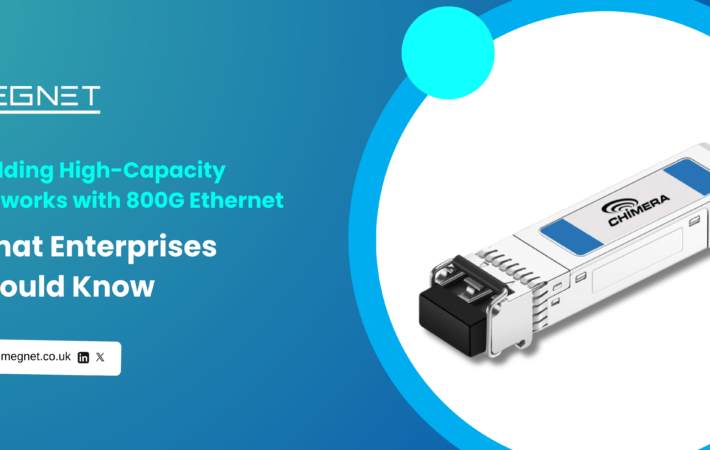
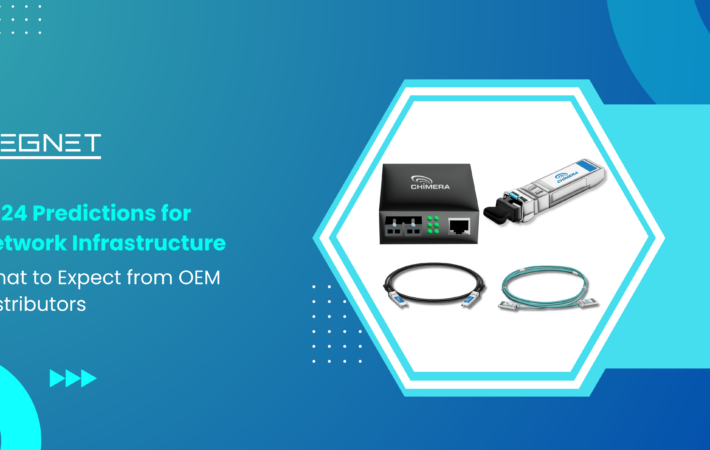
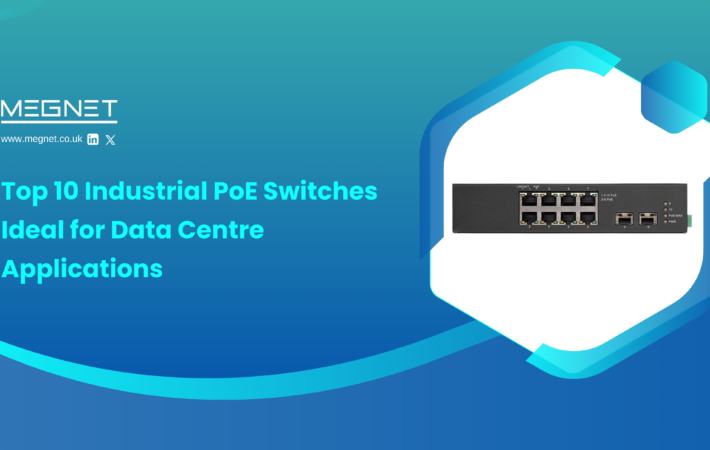


Leave a comment
Your email address will not be published. Required fields are marked *